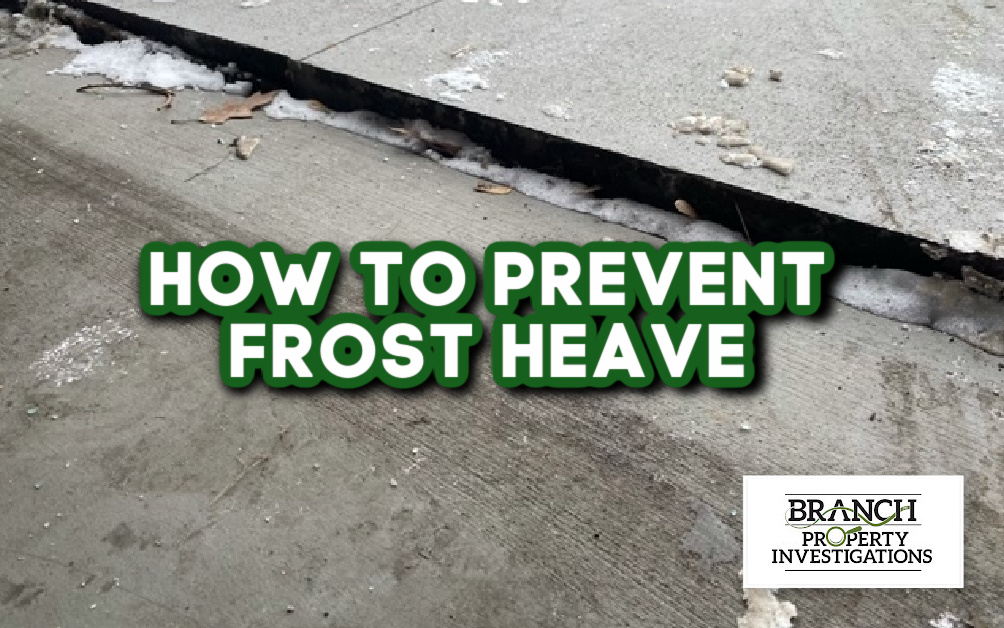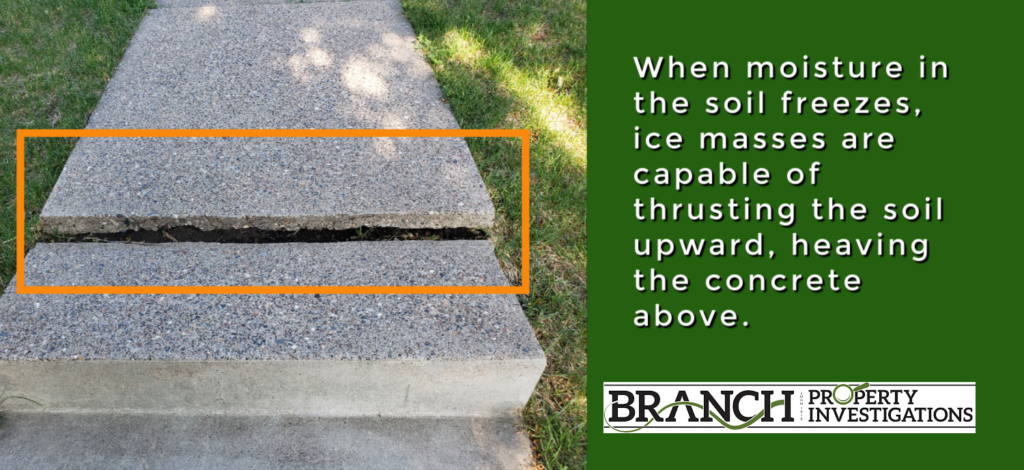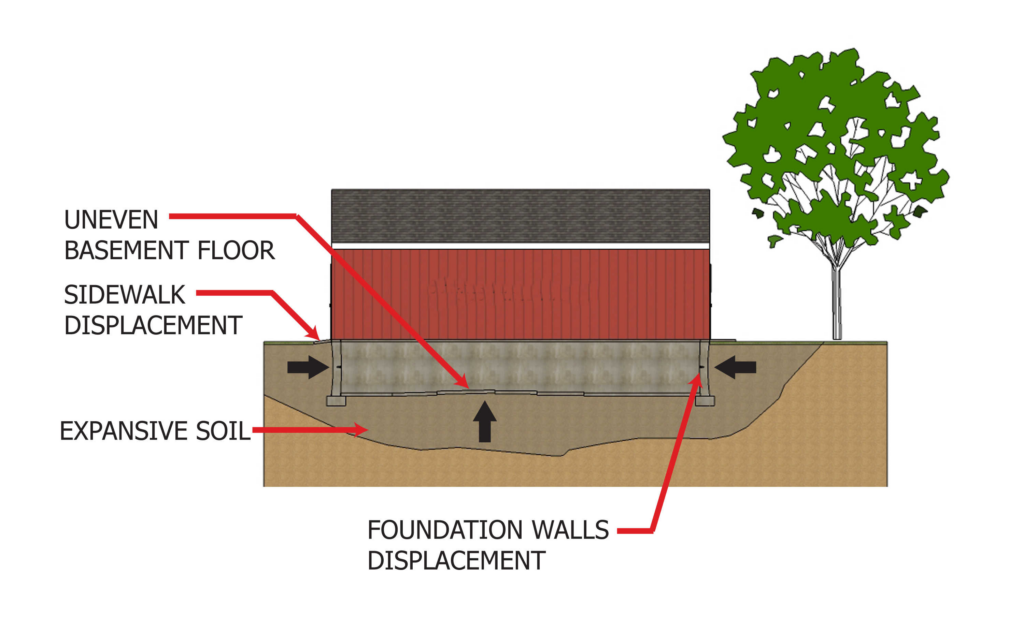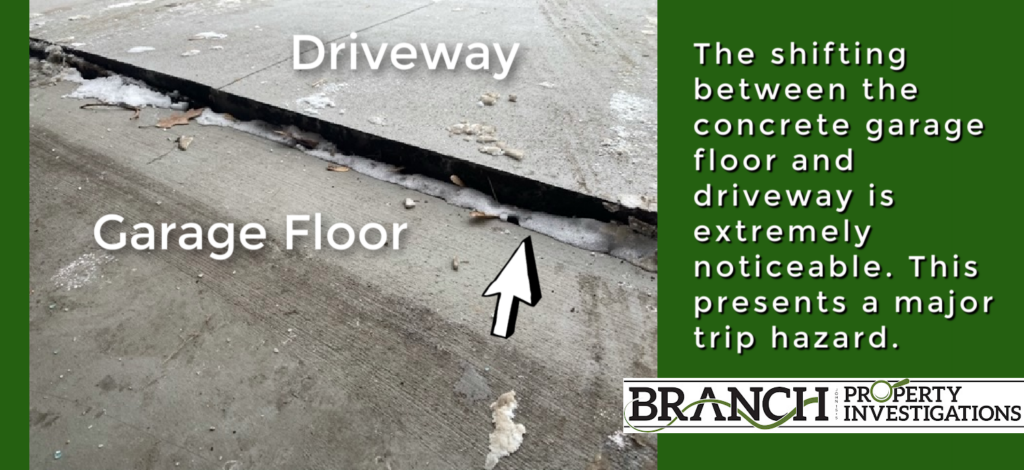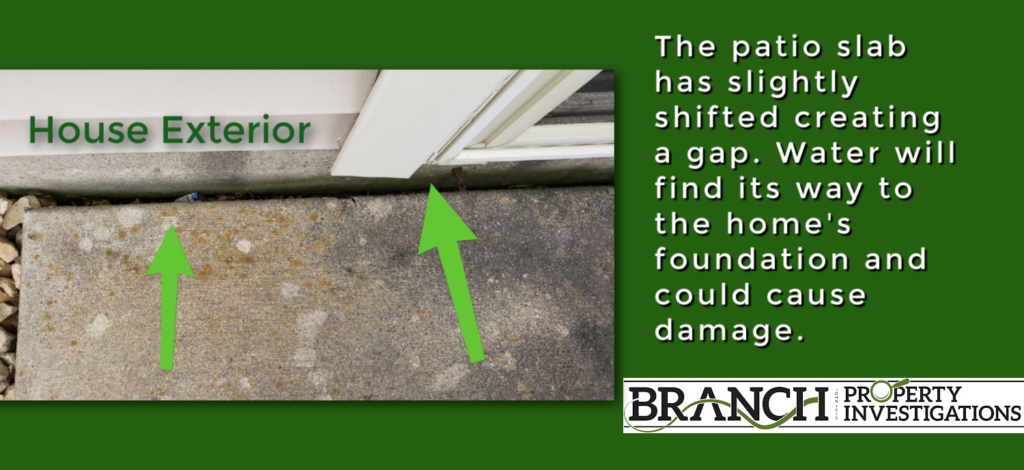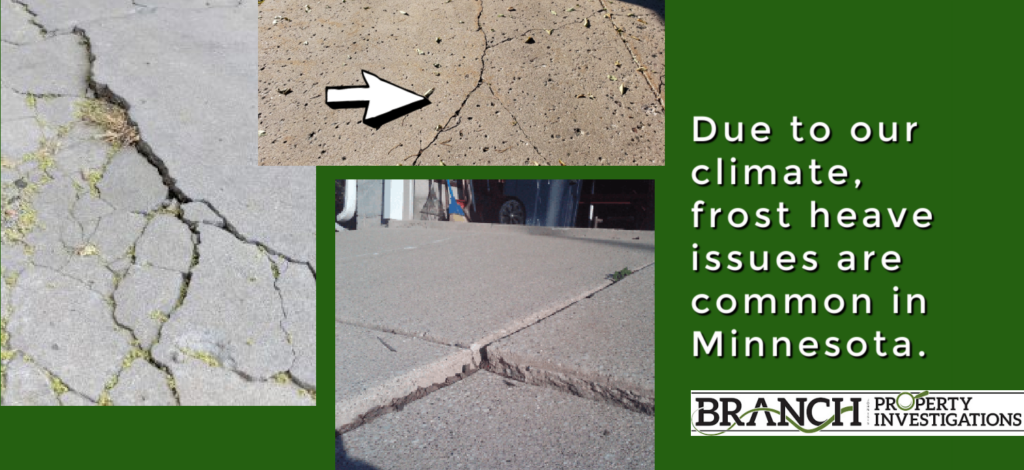We are in the coldest stretch of MN winter but spring is on the horizon! Soon our temps will begin to creep above freezing more regularly during the day. At night, we will enter a period of repeated freeze-thaw cycles and this is when frost heave occurs. You may start to notice this phenomenon in your walkway, patio or driveway. We call out these issues during a home inspection, but many people wonder what they can do, if anything, to prevent frost heave in the first place? Today we’ll explore what causes frost heave and your best chances at preventing it.
What is Frost Heave?
As freezing temperatures penetrate into the soil, the soil’s moisture is converted into ice. When moisture at the freezing area solidifies, water from other parts of soil tend to move toward the freezing area through a process called capillary action. This leads to an increase in the size of ice mass. These ice masses are capable of thrusting the soil layer upward and can create cracks in the soil and concrete above. It can even cause damage to foundations.
Signs of Frost Heave Damage
You may notice unevenness in your patio pavers or cracks and shifting in your sidewalk or driveway. You may see unevenness or cracks in your basement floor or displacement of the foundation.
Can I Prevent Frost Heave?
Frost heaving is heavily driven by soil types, soil compaction, and site drainage. Silty or loamy soils and other clay-type soils are most susceptible to frost heaving. When house-hunting, soil types and drainage around walkways tend to be low on a buyer’s list of priorities. However, if you notice unevenness or cracks in concrete, these may be indicators that the base underneath the concrete was not installed with sufficient gravel to allow for pressure release from below. 4” is the recommended minimum amount of gravel for our climate.
The heave may settle back at temperatures rise in the spring, but it will reoccur unless preventative measures are taken.
Drainage is Vitally Important
Your home’s sidewalk or patio may do the same thing as our buckling roads in Minnesota. Ultimately, preventing frost heave depends on the base under your concrete space, the drainage in that area, and the integrity of the surface.
If the surface seals out water and/or casts it away from the surface edge, you have a better chance at avoiding issues. Depending on the type of finished-surface you have, it may be designed to allow water to flow right through. Some surfaces have a slope or crown to shed water without creating puddles. When either of these design elements are compromised, water will get underneath the slab. As it pools below the surface, it also pushes the bricks, stones, timbers or pavement up, creating an eyesore and often a tripping hazard as well.
The solution is to either prevent water from penetrating the surface or to ensure it drains away properly. You may also need to consider other drainage solutions. This includes re-grading and adding sub-surface drainage that can assist in water removal.
However, if drainage alone will not solve the heaving issue, you may be forced to remove the materials that are heaving to correct the soil issue underneath. This typically requires a contractor’s assistance to make sure that the soil is prepared at a sufficient depth with the right combination of gravel and soil that drains. A qualified contractor will also know the needed compaction to provide a stable base that drains well.
Most MN-homeowners will unfortunately encounter frost heave at some point. If you notice areas of standing water on your concrete surfaces, you may consider contacting a professional to deal with the issue proactively before damage occurs. For a list of trusted professionals, please visit our website’s Resources page. If our office can be of assistance, please call (612) 440-8466!


